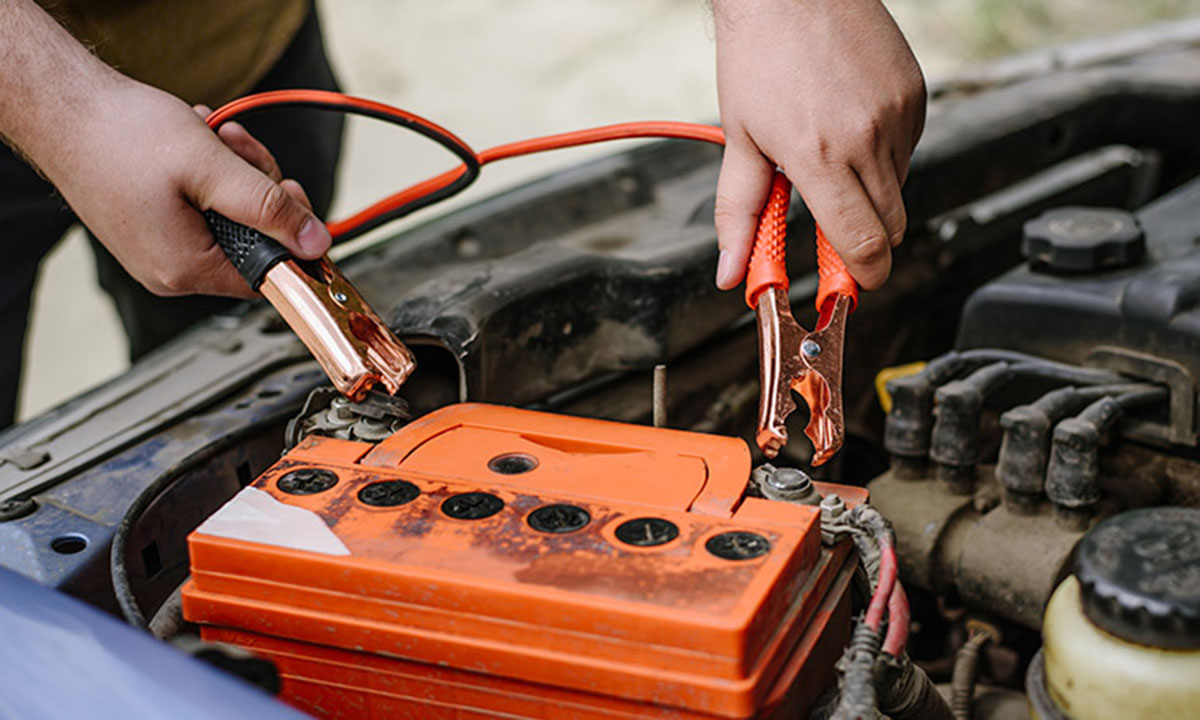If your car won’t start but has power, it could indicate a faulty ignition switch or starter motor. When you turn the key, power reaches the electrical components, but the engine fails to crank.
In such cases, you might need to replace the ignition switch or starter motor. Always consult a professional mechanic to diagnose and fix the issue accurately. Taking your car to a certified technician ensures proper evaluation and prevents further damage to your vehicle.

Credit: www.youtube.com
Checking The Battery And Electrical Connections
If your car won’t start but has power, checking the battery and electrical connections is crucial. Begin by testing the battery voltage, ensuring it has the necessary charge. Look for corrosion on the battery terminals, as this can impede the flow of electricity.
Inspect the battery cables for any signs of damage, such as fraying or loose connections, which could prevent power from reaching the engine. Lastly, verify the condition of the battery fuses, as a blown fuse can disrupt the electrical system.
By systematically examining these components, you can identify any issues and take appropriate action to get your car running smoothly again. Remember, proper maintenance of the battery and electrical connections is essential for reliable starting and performance of your vehicle.
Assessing The Ignition System
When diagnosing a car that won’t start but has power, it’s essential to assess the ignition system. Begin by inspecting the ignition switch for faults. Next, check the starter motor for proper operation. Then, verify the condition of the spark plugs.
Finally, test the ignition coil for functionality. By following these steps, you can determine the root cause of the problem and take the necessary actions to troubleshoot and fix it. Remember to consult a professional if you’re unsure or uncomfortable with any of the tasks involved.
Proper maintenance and regular inspections of the ignition system can help prevent future issues and keep your car running smoothly.
Examining The Fuel System
Having power but unable to start your car can be frustrating. One possible issue is the fuel system. To diagnose the problem, begin by checking the fuel pump. Ensure it is functioning as it should. Next, inspect the fuel filter for any blockages that might be hindering fuel flow.
Finally, evaluate the fuel injectors for clogs or leaks. A clogged or leaking injector can prevent your car from starting. By examining these components, you can pinpoint the cause of your car’s starting issue and take appropriate action. Remember to troubleshoot these steps carefully to get your car back on the road as soon as possible.
Analyzing The Engine Mechanical Components
Analyzing the engine mechanical components is crucial when troubleshooting a car that won’t start but has power. One important aspect to consider is verifying proper engine oil levels. Ensure that the engine has enough oil to lubricate its moving parts.
Another factor to evaluate is the condition of the timing belt or chain. If it’s worn or broken, it can affect engine performance. Additionally, check for any engine blockages. Obstructions can impede the flow of air and fuel, preventing the car from starting.
By thoroughly examining these components, you can identify the underlying issue and take the necessary steps to get your car running again. Remember to consult a professional if needed to ensure an accurate diagnosis.
Additional Troubleshooting Steps
When troubleshooting a car that won’t start but has power, there are additional steps to consider. Testing the engine control module (ecm) is crucial to identify any faults. Using a diagnostic scanner, check for any fault codes that may offer clues to the issue.
Another important step is inspecting the main engine ground for connectivity problems, as a loose or corroded connection can prevent the car from starting. By meticulously going through these troubleshooting steps, you can pinpoint the underlying problem and take appropriate action to get your car back on the road.
Remember to consult a professional if you are unsure or unable to address the issue yourself.
Seeking Professional Help
If your car won’t start but has power, it may be time to seek professional help. Finding a reliable automotive repair service is crucial in this situation. Consulting a mechanic should be considered when all your efforts to fix the issue have been in vain.
It’s important to communicate the symptoms and efforts you have undertaken so that the mechanic can make a more precise diagnosis. By consulting an experienced professional, you can ensure that the root cause of the problem is identified and resolved effectively.
Don’t hesitate to reach out for professional assistance when dealing with a car that won’t start despite having power.
Conclusion
To wrap up, when your car won’t start but has power, it can be frustrating and confusing. However, by understanding some common issues and troubleshooting steps, you can get your vehicle back on the road in no time. Start by checking the battery connections and ensuring they are clean and tight.
If that doesn’t solve the problem, consider testing the starter motor and alternator. It’s also worth inspecting the fuel system and checking for any clogs or leaks. When all else fails, it might be necessary to consult a professional mechanic who can diagnose and fix the underlying issue.
Remember, regular maintenance and taking care of your car’s electrical system can help prevent future problems. By staying proactive and informed, you can keep your vehicle running smoothly for years to come.

